Best Fishing Reel for Salmon and Steelhead
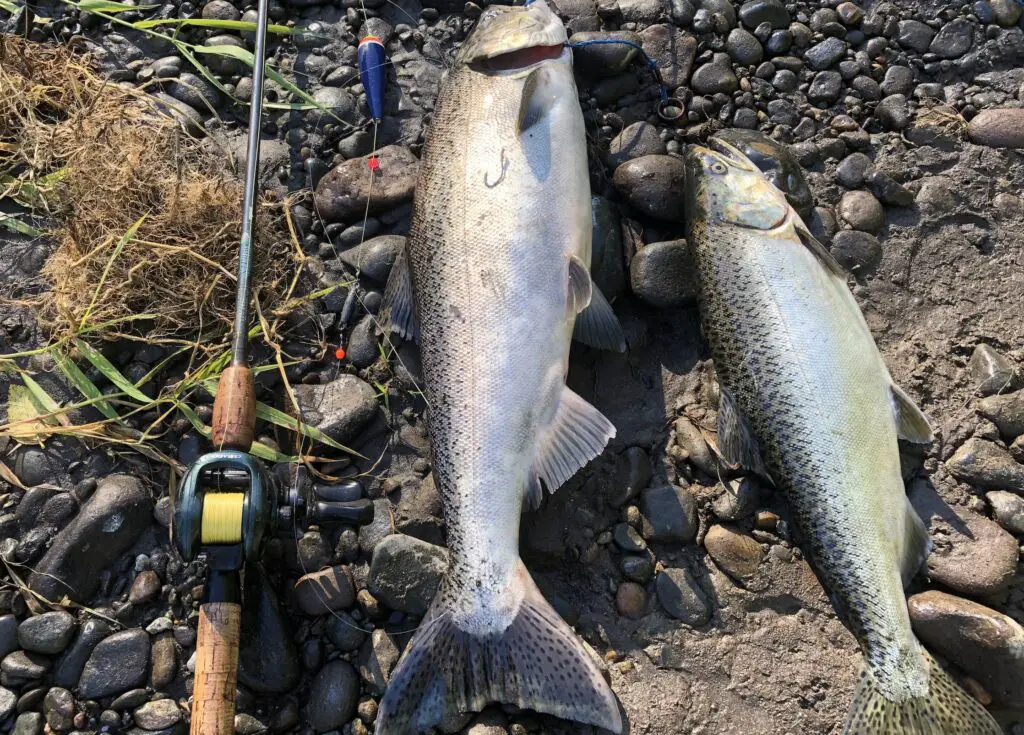
Selecting the best fishing reel for salmon and steelhead is all about performance, price, and durability.
Selecting the appropriate reel is also about the technique you wish to employ to chase salmon and steelhead on the rivers of the great PNW.
Is it possible to float fish with a spinning reel or to toss light spinners with a casting reel? Absolutely!
Sometimes, it may even be preferred, but often these are not the optimal reels for most situations.
We will unpack all of these topics in this guide to the best fishing reels for salmon and steelhead.
If you are looking for a fishing rod to pair with one of these fishing reels, head over to our post about buying a fishing rod for salmon or steelhead.
Let’s start with understanding fishing reel specs.
Fishing Reel specs – what do these numbers mean?!?
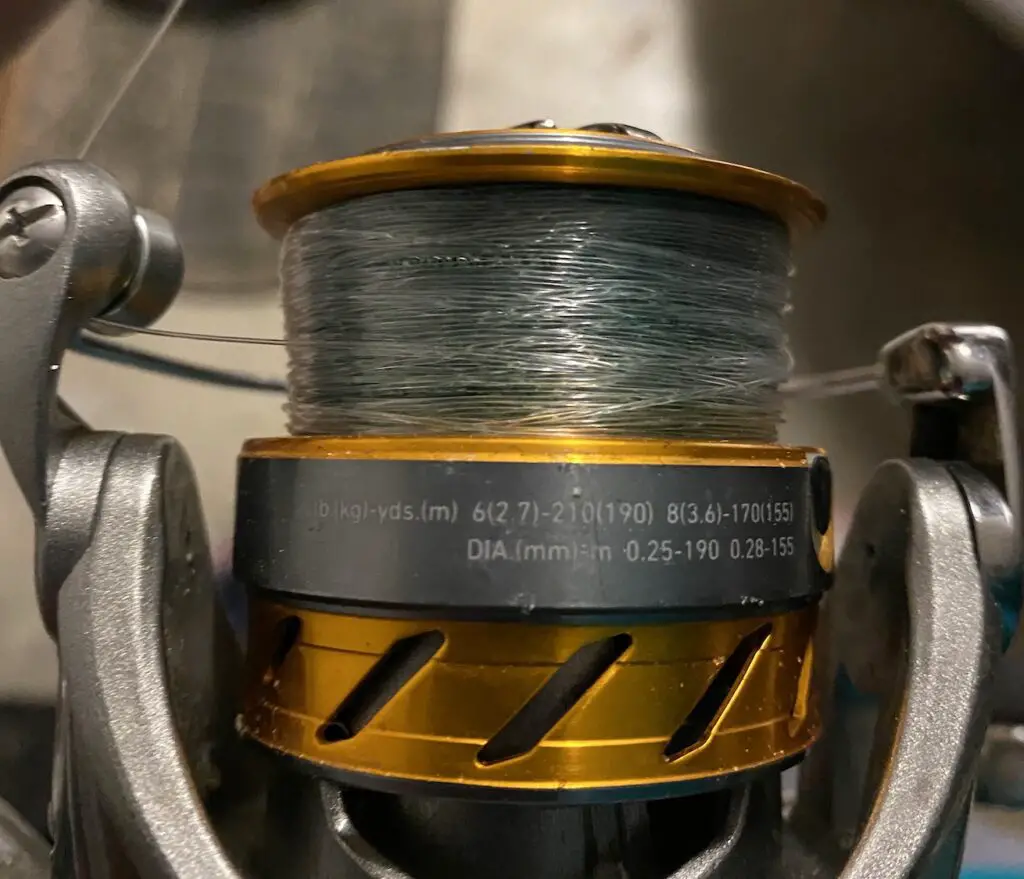
When you are buying a reel, there will be these numbers on the bottom: 8-150, 10-130.
What these numbers mean is that the spool capacity can hold 150 yards of 8 lb monofilament fishing line or 130 yards of 10 lb line.
It’s important to note that 30 lb braid has roughly the same diameter as 8 lb mono, so you can put as much 30 lb braid as you can 8 lb mono on the same fishing reel.
Fishing reel recovery rate
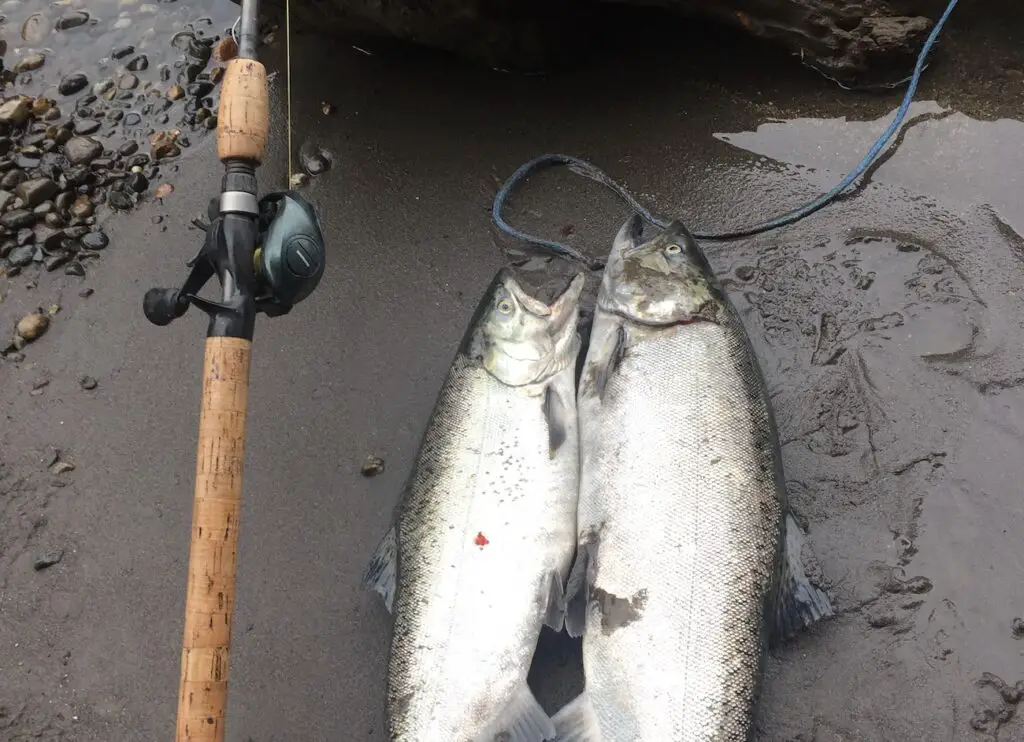
The recovery rate of the fishing reel is more or less important depending on how much casting and retrieving you will be doing.
The measurements are of how much fishing line will the reel retrieve with one full crank of the reel.
Faster is generally regarded as better.
If you are fishing in a river and making cast after cast, you may notice the difference between a fishing reel with a 33″ vs 37″ recovery rate after a few hours.
If you are trolling or plunking / still fishing in a river, the recovery rate will be less important.
Max drag of fishing reel

Max drag is an important consideration if you intend to battle king salmon or large coastal steelhead.
For most other species you can get away with far a lower setting and lighter reel here.
I generally don’t worry too much about this though because of how I go about fighting big fish. I recently landed a 40 lb halibut in shallow water with a 13 lb max drag spinning reel.
How is that possible?
I don’t set my drag so tight that the max drag capability of the reel really matters.
Now it’s important to have some tension on the drag with big kings and steelhead simply because there must be enough tension for the hook to penetrate a tough jawbone.
I often back off the drag after the initial hook-up and thumb the spool to add additional tension or if I need to stop a fish that is running me into an area like a log pile or to the next riffle.
I will need to post a complete article on fighting fish later to adequately cover “thumbing the spool” as a technique.
If you are more of a beginner I would recommend buying a reel with a max drag greater than 15 for fighting bigger fish.
Fishing reel price
Yes, we all want to pay as little as possible for a fishing reel, but let me challenge that for a second.
I’m not covering performance specs such as the number of bearings, because that’s not a great indicator of the quality of the reel.
Yes, more bearings are generally better, but quality bearings are far more important. Quality bearings will lead to a smoother performance while fighting fish and greater casting ability.
Great quality bearings of greater numbers will always show up as a higher price of the fishing reel itself.
I will propose several entry-level reels that perform great for the price, as well as some higher-end possibilities.
When shopping for that first or next fishing reel, don’t immediately assume lower price = better for your needs.
Your first fishing reel for salmon and steelhead

First of all, it’s tough to tackle this topic (see what I did there?) without addressing brands and brand loyalty.
I’ve been a Shimano guy for most of my fishing career. There are going to be many good fishing reel brands out there.
I can only write about what I have direct experience with.
And after using Shimano spinning reels extensively, I’ve found their spinning reels to be low quality in the last 5+ years.
In fact, I can confidently say I will likely never buy another Shimano spinning reel. I’ve had at least a half dozen of their spinning reels that “go bad” on me after a few nice fish were battled.
What do I mean go bad? The drag stops performing smoothly. A smooth drag is top of my list of what I look for in a fishing reel.
A non-smooth drag will result in lost fish and that’s just unacceptable.
I now only buy Daiwa spinning reels and I couldn’t be happier.
I haven’t had a single issue with them, the drag is like butter even after many salmon, steelhead and other species of saltwater fish have worn on them.
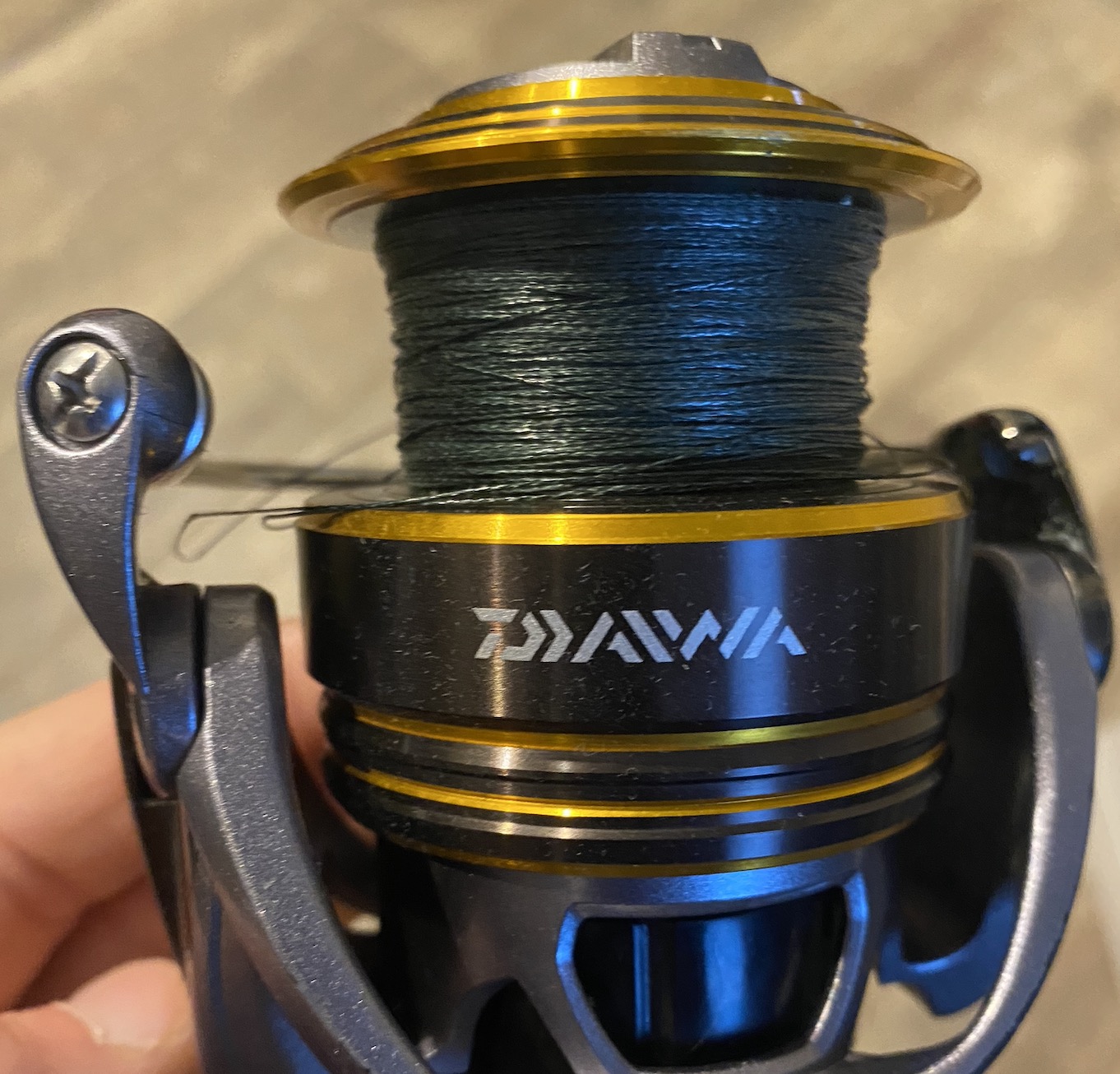
The above spinning reel is on several or my rods and the combination of price, performance, and durability is outstanding.
I use this reel on spinning rods for tossing spinners, light drift gear, jigging for salmon in the rivers or throwing spoons.
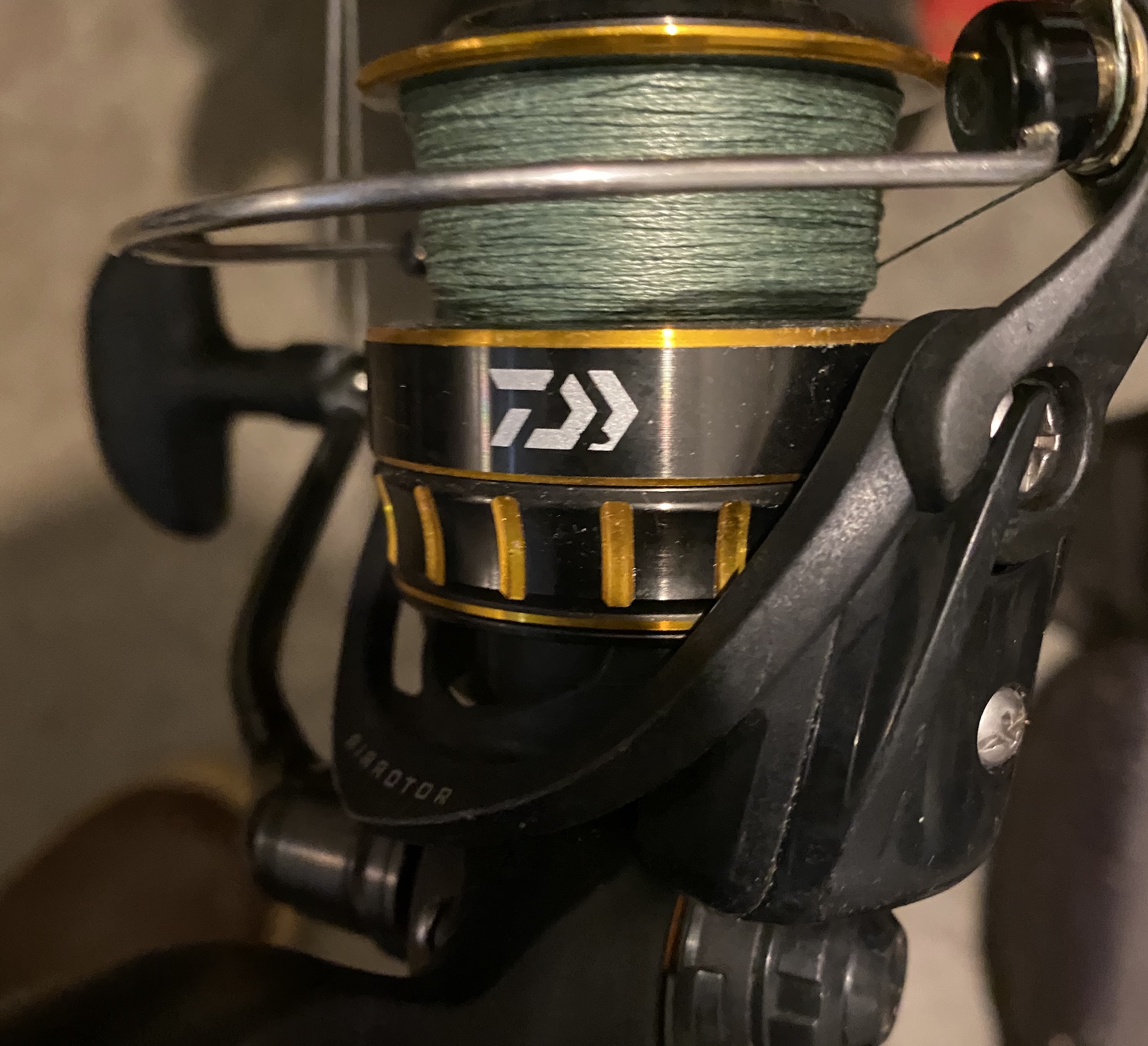
This entry-level salt water model reel is another one I’ve been extremely happy with.
Actually, this is the exact fishing reel that I landed the 40 lb halibut with.
I would apply this to all spinning reel appropriate fishing techniques and feel extremely confident about it.
I use this reel primarily in the salt water to jig for salmon or various species of bottom fish. I also end up using it on the river.
Best casting reel for salmon and steelhead
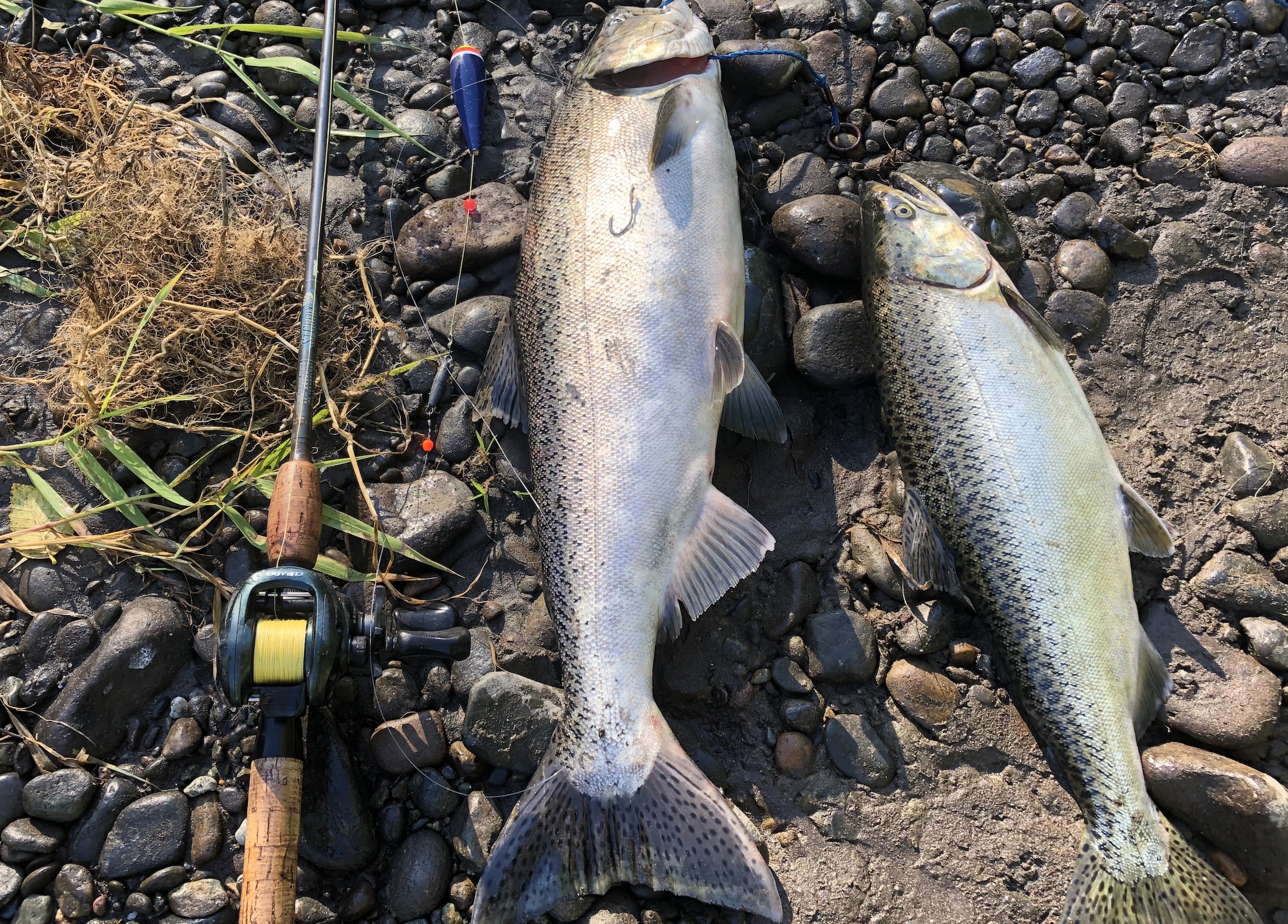
Max drag: 11 lbs. / gear ratio: 7.4:1. / weight: 7.6 oz. / line retrieve: 31″ / bearings: 6bb + 1rb – powerpro line cap: 30/190; 50/120; 65/80 – mono line cap: 8/180; 10/155; 14/110 – retrieve: right
Now back to Shimano. I only use one casting reel on all my casting rods for salmon and steelhead.
The above reel has been simply outstanding for me.
I’ve caught an innumerable amount of salmon and steelhead with this reel. The drag performance and cast-ability are fantastic. It is on the pricier side, but again you get what you pay for.
A casting reel is great for the float fishing technique, but also drift fishing. The main advantage here is releasing drag with a push of a button while retaining the ability to immediately reel in slack if a salmon or steelhead picks up your offering.
Filling a fishing reel with the appropriate fishing line

In most cases I fill my river fishing reels with 30 lb high-visibility braided line.
I do that because of the superior breaking strength, low diameter (same as 8 lb mono fishing line), and visibility that allows me to see my mainline clearly, which is important for many (all?) river fishing techniques.
You can use mono over braid but here’s why I don’t:
Rivers are full of snags that break off people’s gear, and because of that rivers are full of low -pound test mono leaders that this gear is attached to.
If you use 10 lb test mainline let’s say, and you get hung up on somebody’s 12 lb mono leader. Guess what’s going to happen? You will break off and lose everything. -And you will contribute to more lost gear in the river. Who needs that?!
Now, you may ask, why are many fishing rods rated for between 6-20 lb line, but you want me to fill my spool with 30 lb test braid?
Rod makers should be more helpful on this topic, as it can be confusing for beginners.
A typical medium-light fishing rod might be rated for 6-12 lb line and that rating tells me more about the rod strength than the kind of line I will use with it.
A rod rated for 8-17 lb line is a beefier rod, but I’m still likely going to run the same 30 lb mainline.
Now it’s true, that if I were to tighten my drag all the way down on my reel and pull/put bend on my 6-12 lb rated rod when I’m hung up in the river, the rod may break before my 30 lb test mainline.
So here’s what you do to overcome this dynamic:
- Never over-tighten your drag. Your drag should allow you with *some* effort to pull the line smoothly from it. This is as much about successfully landing salmon and steelhead as it is about not breaking your lighter rod. You want a running salmon or steelhead to be able to pull drag during a battle.
- When you are hung up on the bottom, you use a straight rod technique. Meaning, that you ensure there’s no bend in the rod and you pull, even walk straight back until either you break free, or your leader breaks, but your rod does not.
Easy, right?
When you buy a braided mainline, you can go with a high vis or low vis option. I like to use a high-vis mainline and fluorocarbon or mono leaders.
I have also used low-vis braid and tied lures directly to the braid. This is problematic though if you break off, you may lose a lot of braid that is just going to be a problem in the river for years to come.
My new preference is to use high-vis on everything and tie a fluorocarbon top-shot (about 10 ft) with an FG knot to my high vis braid. I can than tie lures such as spinners or jigs directly to the fluorocarbon top-shot.
Don’t know how to tie an FG knot? Watch the below video.
The FG knot is one of the most important knots in your arsenal.
There are lots of good fishing reels out there, and again I can only share from experience.
Do you have a fishing reel you like better? Drop it in the comments below, I would love to learn about it and maybe give it a try on my next purchase.
Looking for more real-time updates? Use these links to follow us on social media: